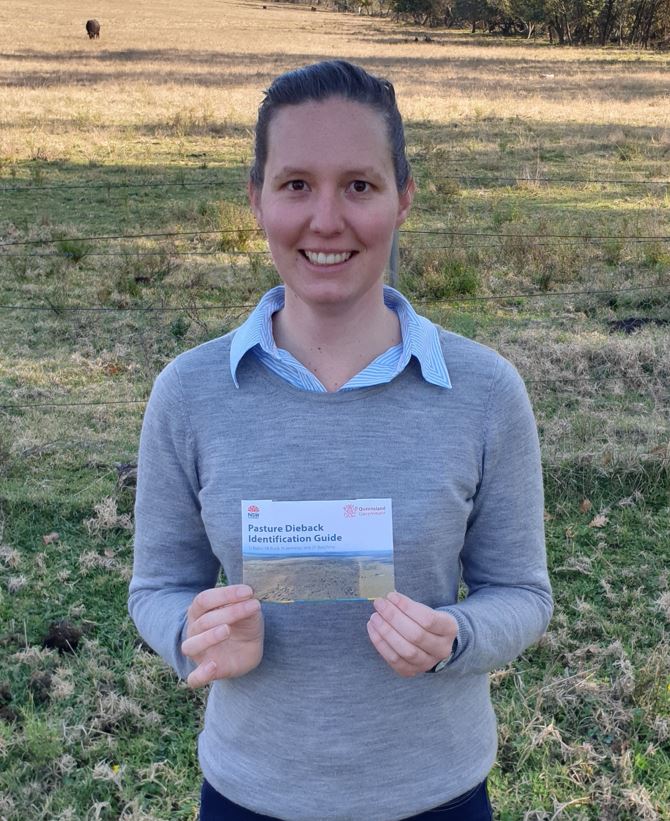A new guide will assist landholders identify pasture dieback and some common pasture disorders and diseases and help raise awareness of the condition that kills sown and native summer growing pastures.
The Pasture dieback identification guide has been developed in partnership with the NSW Department of Primary Industries (DPI), Local Land Services (LLS), and Queensland Department of Agriculture and Fisheries (QDAF).
NSW DPI Pasture Systems Development Officer, Sarah Baker said the new guide allows landholders to do a quick assessment and ascertain the likelihood of pasture dieback.
"The guide describes some common pasture disorders and diseases with symptoms similar to pasture dieback and covers environmental disorders and other nutrient and soil constraints," Ms Baker said.
"Colour photos assist with identification and demonstrate the leaf discolouration that can vary between grass species ranging from yellowing, reddening or purpling.
"To date only summer growing grass species have been impacted by pasture dieback, with some grasses more susceptible than others. Legumes and other broadleaf species are not affected by the condition.
"Symptoms are most evident when grasses are actively growing during spring, summer and autumn, especially following significant rainfall. This is a good time to be checking pastures for signs of pasture dieback.
"Mealybug is associated with pasture dieback on the North Coast, but research to date indicates that pasture dieback is not caused by a single factor, but likely a complex interaction of multiple factors and environmental factors. Research is continuing."
Landholders are encouraged to help us identify where pasture dieback is located. If you suspect symptoms of pasture dieback please:
- Contact the Exotic Plant Pest hotline on 1800 084 881







